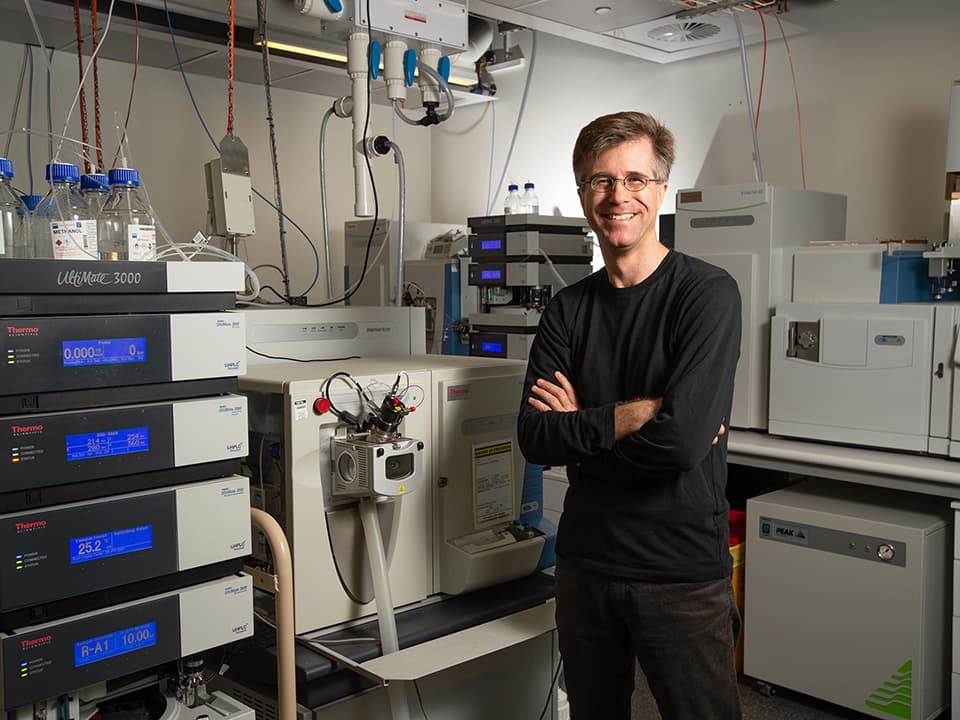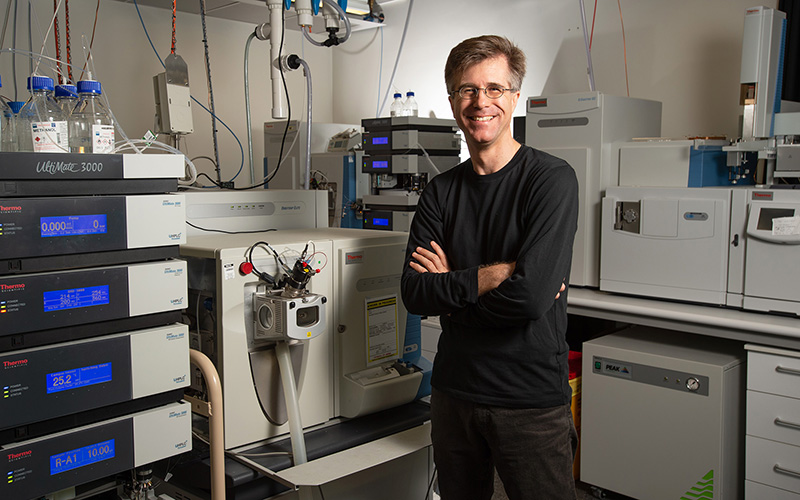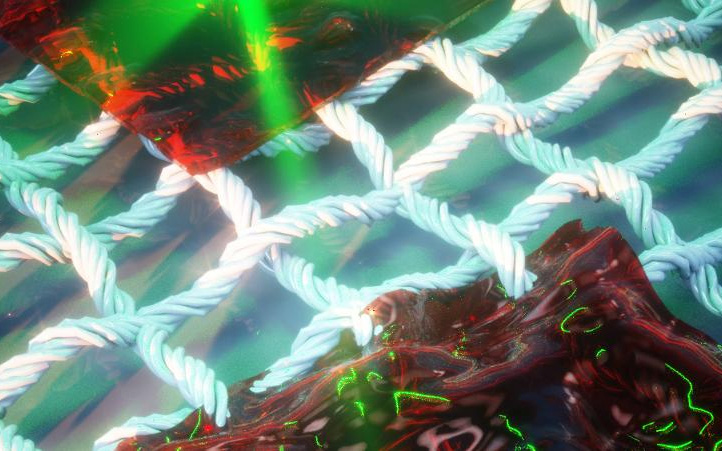'The power of light transforms the way we manufacture next generation materials for health, mobility and the digital world, exploiting its ubiquitous nature and precision.'

Research aim
'To change how we manufacture complex chemical structures and design materials, taking nature as our guide - we have to view a reaction that one has to heat beyond room temperature as a chemical failure - the use of light in nature shows the way.'

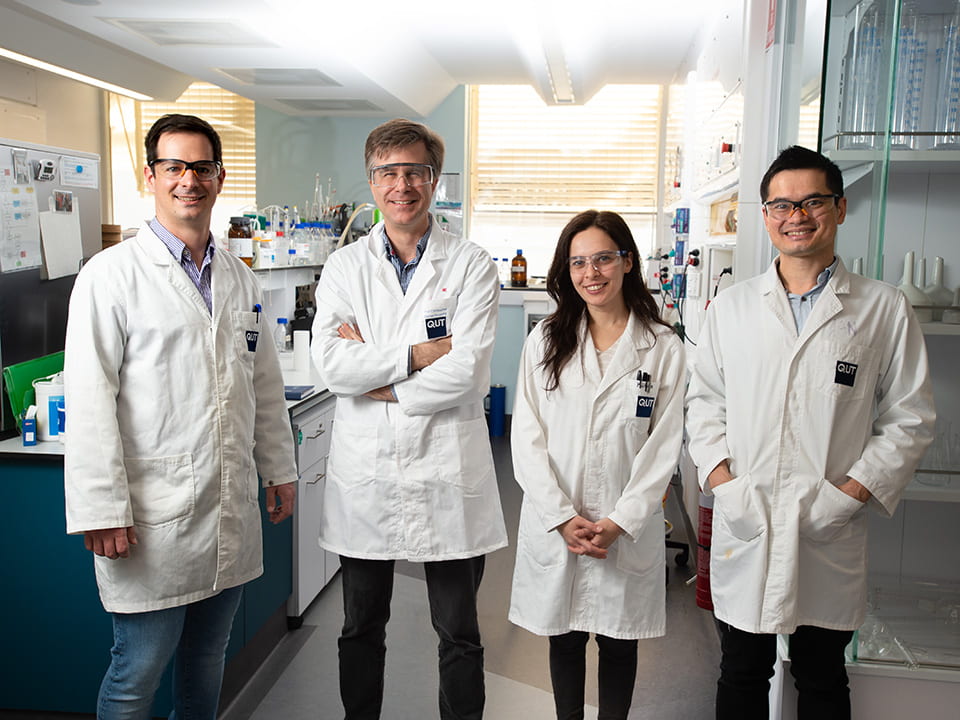
The challenge
'Establish multi-colour 3D laser lithography to allow 3D printing of disparate material properties from one resist cartridge - perhaps the most critical challenge in 3D printing, which would require that chemical reactions can be wavelength selectively addressed by different colours of light in 2 photon processes - science fiction at present, but with huge implications if successful.'
Teaching
'I love working with young scholars and guiding them to shape their unique research journeys. I have graduated more than 90 PhD students over the last 20 years, and each journey is unique. Transforming young graduates into confident scientists is critical for our current world, where the factual is in danger to be replaced by a culture of ‘alternative facts’ – evidenced based approaches to all areas of (public) life are critically lacking.'

Key collaborators
'Over the past 20 years I have collaborated with 154 institutions in 27 countries and each collaboration was an enrichment to both partners - science knows no boundaries, no countries and even no universities - it only knows scientists. Collaboration thrives from the completely open exchange of ideas between researchers, where the free flow of ideas creates a piece of work that is greater than its parts. Some institutions I have collaborated with include the University of Ghent (Belgium) and Technion (Israel).'
Key publications
"Light-Stabilised Dynamic Materials" Houck, H. A.; Blasco, E.; Du Prez, F. E.; Barner-Kowollik, C. J. Am. Chem. Soc. 2019, 141, 12329-12337
"Controlling Thermal Reactivity with Different Colors of Light" Houck, H. A.; Du Prez, F. E; Barner-Kowollik, C. Nat. Comm. 2017, 8, 1869.
“A Self-Catalyzed Visible Light Driven Thiol Ligation” Rodrigues, L. L; Micallef, A. S.; Pfrunder, M.; Truong, V.X.; McMurtrie, J. C.; Dargaville, T.R.; Goldmann, A. S.; Feist, F.; Barner-Kowollik, C. J. Am. Chem. Soc. 2021, 143, 7292–7297.
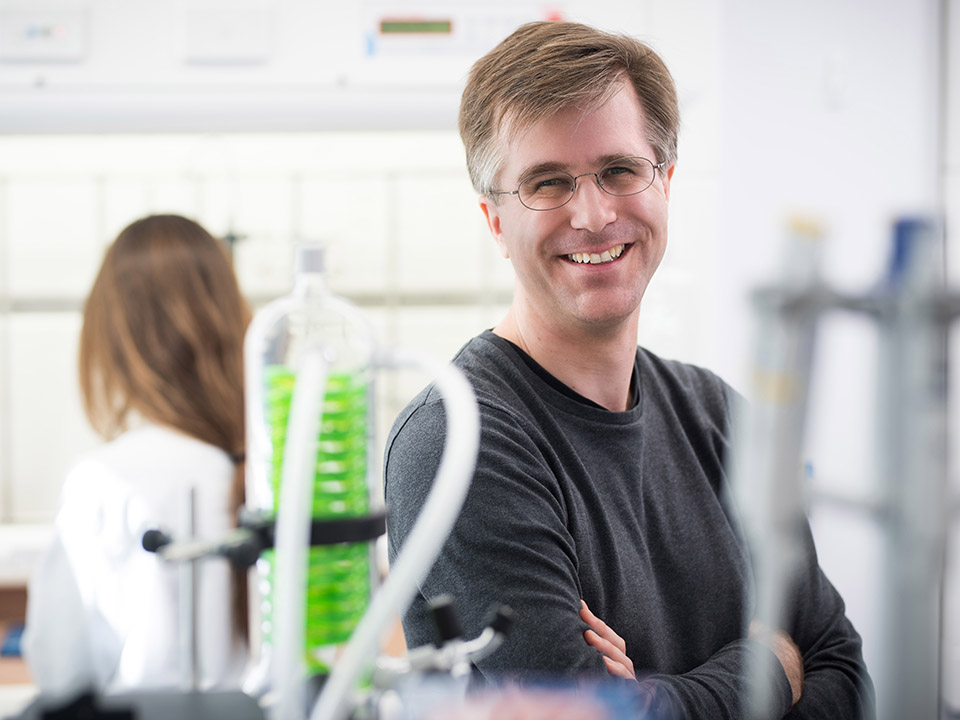
Key achievements
- Introducing some of the most advanced photoresists for 3D printing, including those stabilized by light alone, constituting a new materials class, i.e. light stabilized dynamic materials (LSDMs).
- Applying and developing the concept of ‘action plots’ based on precision laser chemistry - action plots allow us to understand at which wavelength a chemical reaction will be most efficient. This information is otherwise not available.
- Introducing new and efficient light induced chemical transformations, which form the basis for the generation of materials using photochemical methods.
News
Australian Research Council (ARC) Laureate Fellow Professor Christopher Barner-Kowollik’s career’s work inspired by a lifelong fascination with light has been rewarded with a prestigious international award.
In a world-first, researchers from QUT, Belgium’s Ghent University (UGent) and Germany’s Karlsruhe Institute of Technology (KIT) have pioneered a novel, dynamic, reprogrammable material – by using green LED light and, remarkably, darkness as the switches to change the material’s polymer structure, and using only two inexpensive chemical compounds.
Researchers have developed an algorithm for photochemistry, bringing the burgeoning field a step closer to the goal of using different colours of light like a switch to activate a range of different chemical reactions in one single material.
Centre for Materials Science
The QUT Centre for Materials Science provides a collaborative environment for curiosity-driven materials research and innovation.
Contact
Contact Professor Christopher Barner-Kowollik, connect on social media or explore the Soft Matter Materials Laboratory.
